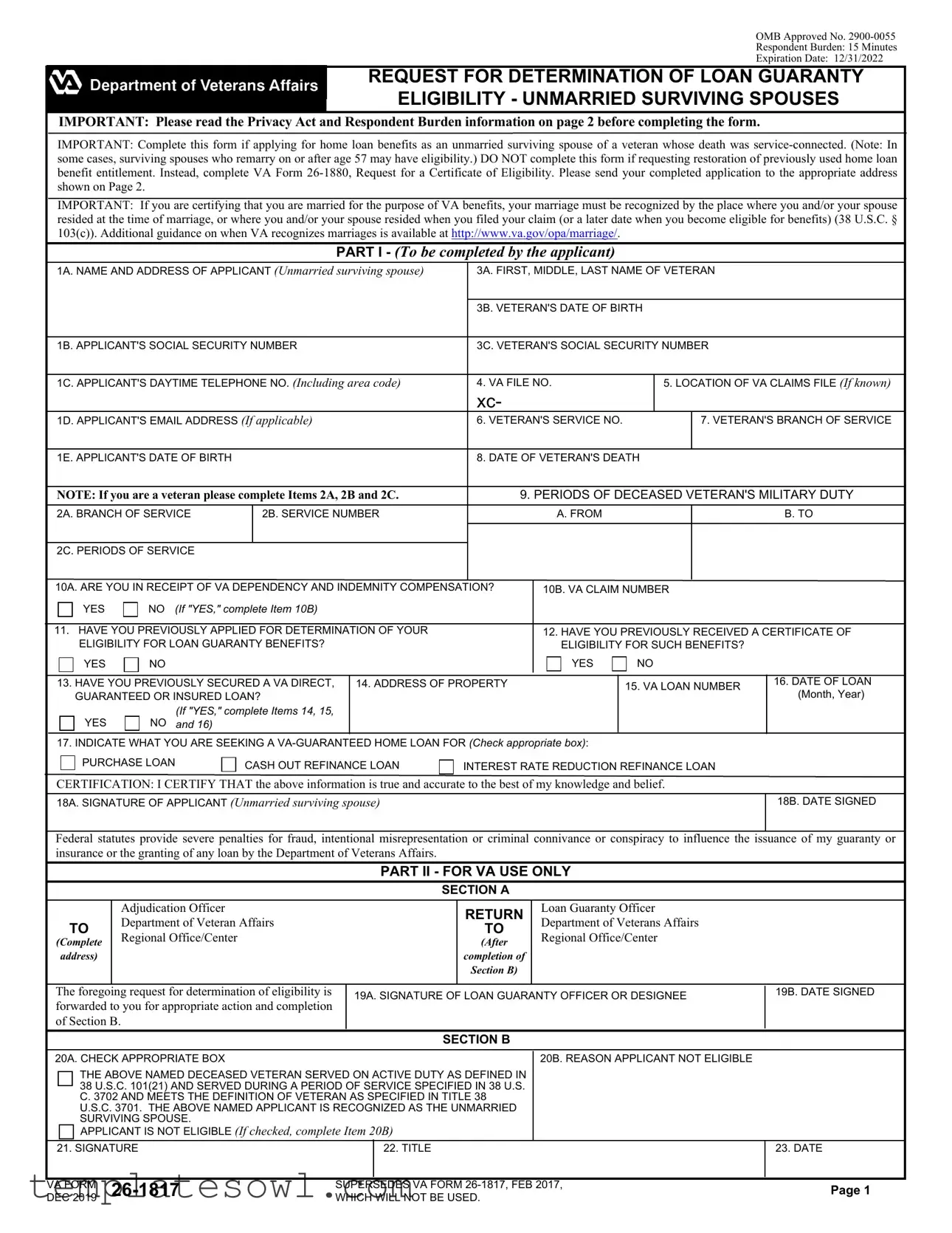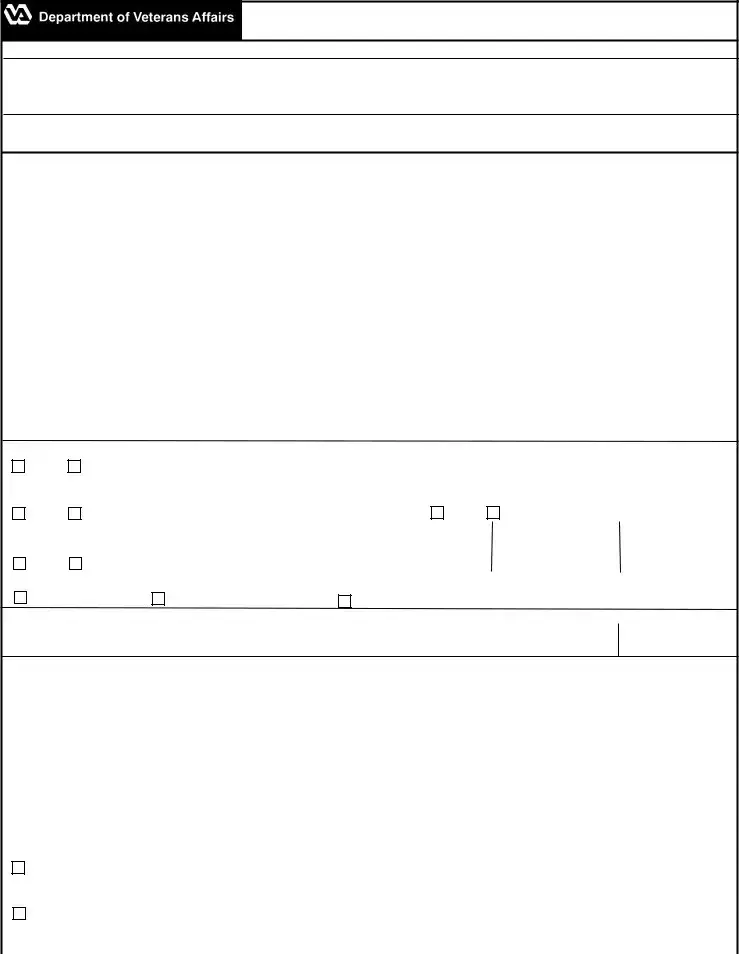Completing the VA Form 26-1817 is crucial for unmarried surviving spouses seeking loan guaranty eligibility. However, many applicants make common mistakes that can delay or derail the approval process. Awareness of these potential pitfalls can make a significant difference.
One frequent error is skipping the Privacy Act and Respondent Burden information. Not reading this section can lead to misunderstandings about how personal information will be used and the importance of providing complete details. Taking a moment to familiarize oneself with this information is essential.
Another issue arises when filling out the applicant's information. It's vital to ensure that the name, address, and Social Security number are accurate and match the documentation provided. A simple typo can lead to unnecessary complications and further requests for clarification.
Additionally, many forget to include all necessary information about the veteran. Items like the veteran's full name, date of birth, and Social Security number are mandatory. Omitting these can lead to a rejection of the application.
Some applicants also overlook the requirement to indicate whether they are receiving VA Dependency and Indemnity Compensation. Ignoring this section may raise red flags during the review process. Ensuring this information is accurately provided can streamline the approval process.
Moreover, answering questions regarding previous applications requires careful attention. Many individuals might not recall their prior submissions or may confuse details, resulting in inaccurate information. Review previous applications to avoid contradictions.
It's also essential to provide relevant property details correctly. Applicants may either skip filling in the property address or make errors in the property description. Thoroughly reviewing this information ensures that the intent of the loan is clear.
Furthermore, the certification at the end of the form must not be overlooked. Applicants often forget to sign and date the document, leading to immediate denial of the application. A signature serves as a declaration that all provided information is truthful, and it is vital to complete this step.
Lastly, many submissions are held up due to improper submission methods. Following the submission instructions is critical. Ensure that the form is sent to the correct regional office, as indicated on the last page. Misaddressing the application can result in delays that are easily preventable.
By being aware of these common mistakes, applicants can enhance their chances of a smooth and successful process. Taking the time to double-check details, read instructions, and provide complete and accurate information will greatly facilitate obtaining the benefits deserved.


